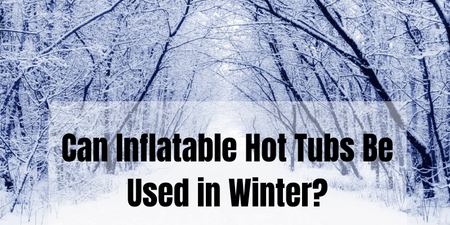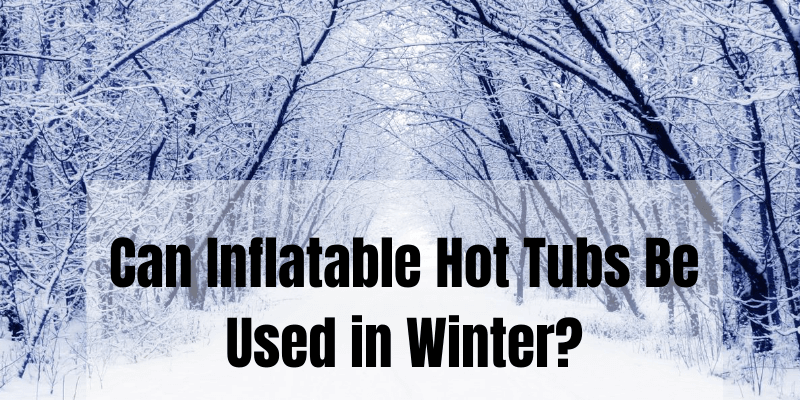
If you’re thinking of buying an inflatable hot tub, you may be wondering whether it’s suitable for use all year round. Standard acrylic tubs are fine to be used during the winter season, but can you use an inflatable spa when the weather turns cold? I decided to look into it to find out more about whether I could expect to enjoy a luxuriously warm soak in the bubbles when the winter comes around.
So, can inflatable hot tubs be used in winter? In many cases, unfortunately, the answer is no. Most inflatable hot tubs aren’t designed to be used in cold conditions since the vinyl material that they are made from deteriorates when the temperatures drop too low. However, there are ways around this to enable you to use your spa in winter if you take certain steps.
Can I Use My Portable Spa In Winter?
There’s nothing that sounds quite so luxurious as the idea of taking a wonderfully warm, bubbly spa bath during the cold winter months, but if you have an inflatable hot tub you may be wondering whether or not it’s suitable for inflation during the cold season.
After all, most tub manufacturers state that their products shouldn’t be used in temperatures below 4 degrees Celsius, so if the temperatures in your area are likely to drop below this figure for an extended period of time, it makes sense to pack your tub away until the spring comes around again.
However, if the weather in your area is likely to drop, but isn’t set to go below 4 degrees, you could easily continue using your inflatable hot tub throughout the winter months. The only caveat is that you continue checking the temperatures on a regular basis. Should the temperatures be set to drop too low, you should take steps to stop using your inflatable tub and to put it away indoors until the weather warms up.
The major issue that can arise if you use your inflatable hot tub during the winter is that the motor mechanism of the pump can fail. These units haven’t been designed for use in very cold conditions and therefore, the motor may be damaged should it be run at a very cold temperature.
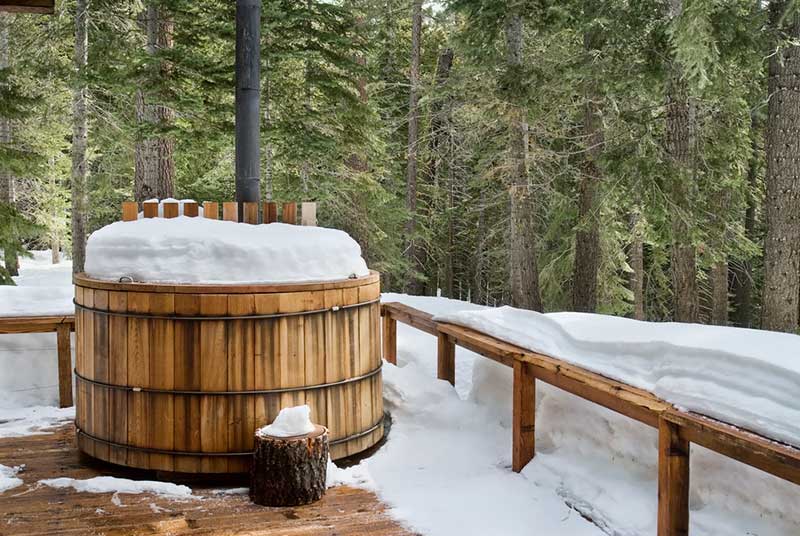
Not only that, but most of the inflatable spas that are sold these days have a single motor unit that operates all the tub’s functions. This means that the blower which inflates the hot tub is also the same as the blower which supplies all the bubbles through the air jets. It’s also responsible for heating the water and circulating it through the system.
In most units, the pump cannot run when the air jets are expelling the bubbles, and vice versa. In the winter, if you take the spa lid off the water cools down very rapidly and, with this sort of all-in-one blower, it’s impossible to run the water heater and the air jets simultaneously. This means that you can run the bubbles however the water will soon begin to cool, leaving the spa feeling like a warm bath, not a true hot tub.
This is especially problematic as the air that the blower blows through the water to make the bubbles is taken directly from the air outside. If the ambient air temperature is low the cold air being blown through the water will lead to a rapid drop of water temperature.
Although the water inside your hot tub should remain warm as long as the spa remains covered up, you should take great care if you continue to use it outdoors in very low temperatures. If the water freezes, this could be a major problem since it could result in a pump failure that cannot be rectified.
It could also cause the vinyl material that the tub is made from to deteriorate and become damaged, therefore becoming more prone to tears, rips and leaks. Also, if you use the spa at temperatures below the recommended level and a problem occurs, you won’t be covered by the tub’s warranty. This will, therefore, leave you paying out of pocket for repairs or even require you to pay for a brand new tub to replace the damaged one.
Despite these guidelines, there are some people who do use their inflatable hot tubs in the winter, and do so at their own risk. If you decide to do the same, you need to understand that you won’t be protected should damage occur.
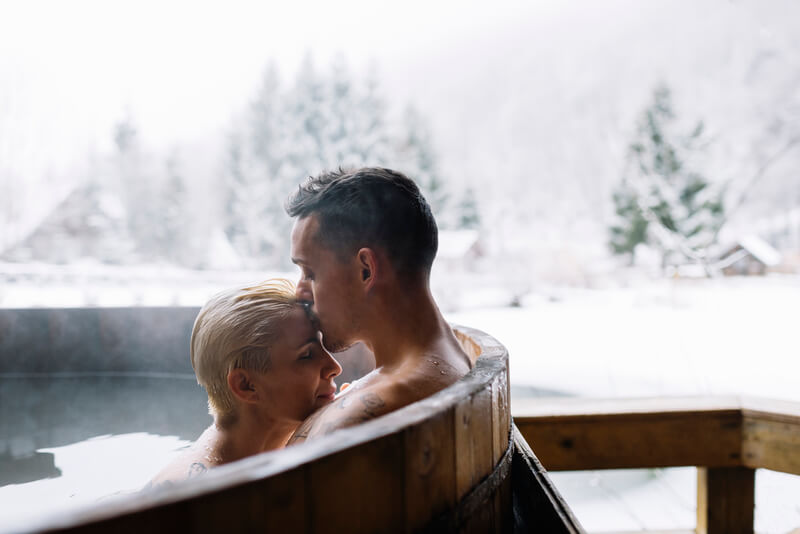
Is It Necessary To Drain An Inflatable Hot Tub During The Winter?
If you shouldn’t use your inflatable hot tub during the colder months, should you actually drain it and pack it away until the spring returns once more? The answer is usually yes, you should drain your inflatable spa and also pack it away properly so that it can stay safe during the winter.
Of course, if the water inside your hot tub is already frozen, you will probably struggle to drain it. While the water may be frozen on top, it will probably still be liquid beneath, so although it may prove challenging to drain the water out, it won’t be impossible. It’s important to be aware that the ice could cause damage to the inside walls of the tub while it is being emptied. It therefore makes sense to empty the water from the tub when it isn’t frozen.
Although it would technically be possible to leave an inflatable hot tub empty of water during the winter months, it’s always best to then pack it away so that it is safe from any potential harm. Once it contains no water, your inflatable tub will be quite light and easy to move. This means that if you leave it outdoors and empty in the winter, it will be blown about and not only will that be irritating, it could also get accidentally blown onto something sharp that could cause a puncture.
To avoid this eventuality, you should put the deflated tub along with all of its components and accessories back into its box and store it away safely ready for use once the weather warms up.
On the other hand, though, if you’re keeping your hot tub in a space that covers it on top and all sides, you may be able to leave it inflated over the winter months safely, ready for refilling whenever you want to use it.
How Do I Shut My Hot Tub Down For Winter?
When the winter comes around, you’ll need to know how to shut down your hot tub safely ready for packing away during the cold months. The first step is to power down the tub then unplug it from the mains power outlet once the heater has been switched off.
Using the drain valve, remove all of the water from the tub using the drain valve with a garden hose, taking care to empty out the air blowers to ensure that they don’t get damaged during storage. After removing the air blowers, take the filters out and put them into a cleaning solution while you clean the filter basket if your tub has one. Once the filters are cleaned, put them safely in a clean and dry area so they don’t catch any fresh dirt.
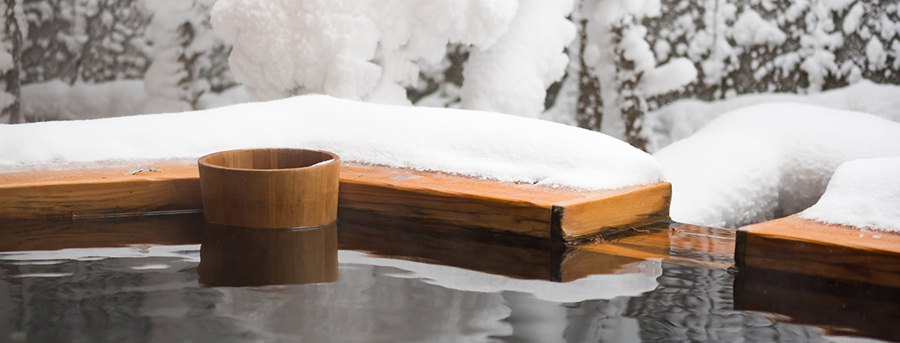
This would also be a good time to stock up on fresh filters for the upcoming hot tubbing season. Amazon have a good selection on this page.
If the pump housing of your tub comes complete with drain plugs, open them up. This will help you to make sure that the very last drops of remaining water can be drained out of the tub. It’s possible to either dry out the pump manually or use a shop vac to dry it more rapidly. If your hot tub has jets, you need to also ensure that the water is removed from these.
Finally, ensure that you’ve cleaned the tub thoroughly. You can use a spa cleaner to do this properly. While you can scrub the sides a little, take care to be gentle as you need to ensure that you don’t damage the interior of the tub.
Once you have finished cleaning, you can deflate the hot tub and its lid, and carefully fold it and pack it away so that it won’t be damaged over the winter. While this may appear to be an arduous task, it’s essential if you’re going to preserve the lifespan of your tub and make sure that it’s fresh and ready for use when the warm weather makes a reappearance.
Can I Use My Inflatable Hot Tub Indoors During The Winter?
If you wish to make use of your inflatable hot tub all year round, there is one effective solution that you may wish to consider. Keeping your portable spa in an outbuilding, garage or other structure can help to protect it from the worst of the weather and make it suitable for use even during the winter months.
As long as the temperature in the area where the hot tub is located remains above 4 degrees, you can continue to use it, therefore by keeping your spa under cover you can continue using it even when the weather is very cold.
While some people choose to keep their inflatable hot tubs indoors all year round, others drain the portable tub that they have been using outdoors during the summer months and, when it’s empty, bring it inside so they can carry on using it throughout the autumn and winter.
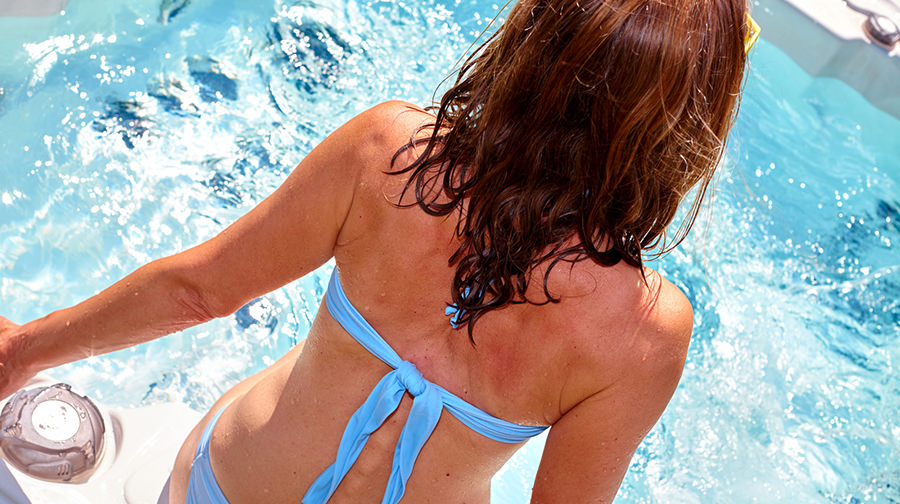
They choose to place it in either their conservatory, garage or another covered space. While this is certainly possible, and represents a great way of maximising the amount of use you can enjoy from your inflatable hot tub, there are a couple of considerations to bear in mind before you start to set up your tub inside your home.
The first consideration is water. When you get into and out of the hot tub, water is going to drip down off your body. While this isn’t going to be a problem outdoors, it could potentially cause a major problem inside the home. If you’ve got carpeted floors, for example, you could end up with a mould or mildew problem due to damp.
If you have hard flooring such as linoleum, laminate or wood, you could find that you are regularly having to mop up the floor to prevent a slipping hazard from occurring.
Therefore, considering the type of floor you have and how you’re going to protect it is imperative. You may wish to put plastic sheeting down under the tub itself and then put old towels onto the plastic sheet. This will help to absorb any excess water that drips off bathers as they exit the tub and will also help to prevent anyone from slipping and falling over in any puddles that could form.
The next consideration is steam. Hot tubs, even portable ones, are capable of heating up to a temperature of 40 degrees. This means that steam is produced whenever the tub is in use and the lid is removed. This allows the room in which the tub is located to become damp – if you think of it as being similar to the bathroom when you take a shower or bath you can imagine just how much water vapour can be produced.
Therefore, you need to ensure that you have the room properly ventilated, with windows and doors that can be opened whenever you’re using the hot tub so that a damp problem doesn’t occur. Nobody wants to have to contend with mould and mildew due to using a hot tub inside the home.
The final consideration is weight. Although inflatable hot tubs are relatively light when they are empty, as soon as they are filled up with water they become considerably heavier. Then add to that the weight of the bathers themselves and you can see that your floors will need to be strong enough to support a substantial weight, and that load will be only spread across a small footprint.
It’s very important to ensure that you have chosen a room that has flooring designed to take this kind of weight if you plan to use your inflatable hot tub indoors. It would be wise to choose a downstairs room, and preferably one that has a concrete floor so that you can be certain of its sturdiness and support.
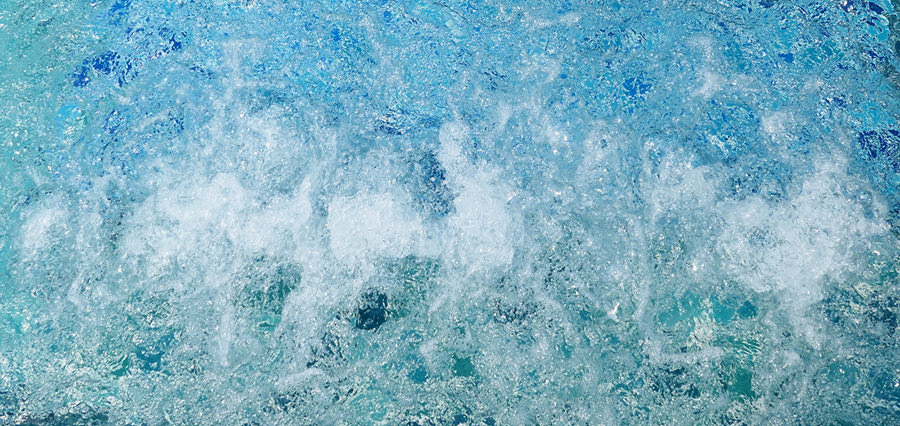
Will It Take Longer To Heat My Hot Tub During The Winter?
Usually, a properly functioning inflatable hot tub will be capable of raising the temperature of the water that it contains between 3 and 6 degrees each hour. You can make your inflatable hot tub warm up more rapidly by leaving the lid in place since heat escapes from the surface of the water as the cold air blows over it.
However, if your inflatable tub is situated outdoors, the temperature of the air around it will also be a major factor. It stands to reason that the warmer the weather is outdoors, the more rapidly the hot tub’s water will warm up. If the day is sunny and warm and you wish the temperature of the water to reach around 100 degrees, you’ll find that it’ll take about 4 hours. On a cold day, it could take twice as long or even longer.
Another factor that will impact on how long it will take for the water in your tub to warm up is the condition of the components including the pump, water heater, jets and the cover. All of these will have an effect on how rapidly the tub will reach the ideal water temperature and if some of those components are damaged or wearing out, it’ll take longer for the water to get to your chosen temperature. If the pump has been damaged by the cold weather of winter, it could make it take even longer for the water to get to the right temperature for bathing.
Related Questions
Should I leave the heater on in my hot tub? Whether you’re using your inflatable hot tub in the middle of summer or later on in the year when the weather is getting colder you need to know whether or not your tub’s heater should be left running all the time.
There isn’t a yes or no answer to this since it’ll really depend on the climate in which you live and the way you wish to use your tub. If you’re wanting to use your tub during colder weather you should probably leave it running if you wish to use it on a regular basis.
This will make it easier for you to simply hop in and enjoy the water whenever you wish. On the other hand, if the weather is warmer and you only wish to use the tub occasionally, it may make better sense to switch it off and just heat up the water whenever you wish to use it.
If I set up my hot tub indoors, where should I put it? Before setting up an inflatable hot tub, choose the right spot. It must be near a water supply and have proper drainage. It should also be in a spot where wetness on the floor won’t be a major problem. You should also choose a room with good ventilation and with flooring that is capable of supporting the heavy weight of the spa when it’s filled with water.

